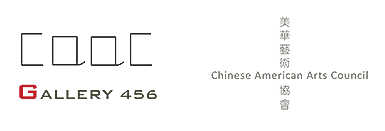Artist: |
Location: Gallery 456 |
This exhibition features nearly thirty works created during my tenure as a visiting scholar at Harvard University (October 2024 – October 2025). While the use of mixed media reflects contemporary artistic methods common in the West, the subjects and aesthetics of the works are deeply rooted in Eastern traditions. My intent is to convey the poetic spirit and cultivated taste of Chinese culture—using modern materials to explore classical sensibilities and employing traditional brush-and-ink approaches to express contemporary vitality.
My academic training is in the intellectual history of Chinese thought, with familiarity in classical poetics and painting theory. Recent years have seen an abundance of research and publications on Song and Yuan dynasty painting, and I have also studied Chinese painting collections held in major museums around the world. How did the ancients paint? How did our predecessors understand their own artistic practices? These are questions that have long preoccupied me. By engaging painting through the lens of poetics and theory, I aim to closely read and interpret these works. It is as though I am borrowing the gaze of ancient literati to observe the world—landscapes, birds and flowers, morning and dusk, the shifting seasons—and through their vision, I come to a deeper understanding of the precious images that history has left us. As the saying goes: “Read ten thousand books, travel ten thousand miles.”
I have loved painting since childhood. As an adult, I studied under several Chinese painters with strong foundations in brushwork and ink technique. At the same time, I have systematically researched the profound influence of twentieth-century Western modernism on Chinese art. My practice has developed over more than twenty years, evolving in tandem with my scholarly research into Chinese tradition and enriched by firsthand engagement with Western and Japanese artistic traditions. This raises a question: is it possible to use contemporary materials and visual language from the West and Japan to express a classical Chinese scholar’s vision of painting? I believe it is worth the attempt.
“Xieyi” (writing the idea) is a core term in Chinese painting, while “expression” is a key concept in Western art. For me, there is no clear boundary between the two. The spirit of art lies in inner resonance, not external classification. Creation does not begin with a concept—whether using traditional brush-and-ink or Western materials like tempera, oil, acrylic, or watercolor, what appears on the canvas is not just formal tension, but an authentic outpouring of emotion and lived experience.
The dynamic between “emptiness and fullness” is a fundamental duality in painting. Since ancient times, Chinese literati painting has embraced both the tangible and the intangible, reflecting a philosophical and cosmological worldview that remains profoundly relevant today. Contemporary painting is marked by multiplicity, but the modern expression of Chinese painting must draw sustenance from its own classical cultural roots. I therefore begin from a place of poetic sensibility—what the Tang dynasty artist Wang Wei described as “painting within poetry, poetry within painting”—to cultivate what I call a Poetic Spring aesthetic. Since the mid-Ming dynasty, Chinese classical painting has gradually lost its poetic core. A return to the spirit and integrity of the Song, Yuan, and Tang dynasties may offer a meaningful path for contemporary Chinese painting.
In today’s world, what we may lack most is wenxin (cultural heart) and wenmai (cultural lineage). Yet these are precisely the essence of the Chinese literati spirit. That vitality and subtle rhythm embody both the depth of traditional thought and a broad, sensitive responsiveness to life. Art does not speak through abstract concepts, but through form and image. The changing times bring both disruption and continuity—posing profound challenges but also offering opportunities for renewal.
Every generation of artists must reexamine tradition and forge a personal relationship with it—where inheritance and rebellion, submission and provocation, parody and critique, all coexist. Artistic creation is a venture into the unknown; and in an age increasingly shaped by AI technology, we must more cherish the sensitivities of art and nurture a mature, expansive sense of self.
Artist Talk: June 13, 2025, 7pm
| Coverage |




